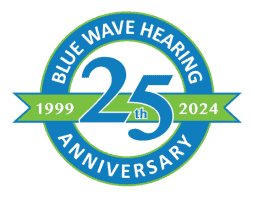- Alcohol and Hearing Health - April 9, 2025
- How Smoking Can Harm Your Ears - March 11, 2025
- Succeeding in the Workplace with Hearing Aids - February 10, 2025
Most of us assume that we can pinpoint the causes of our hearing loss — too many loud concerts in our youth, living near a busy airport, illness, injury, age, overdoing it on ototoxic medications, etc. In reality, hearing loss is cumulative, and we are often exposed to dangerous noise levels without realizing it. Over 30 million workers across the U.S. and Canada sustain those exposures on the job. Check out the list below to find out if you’re at risk and what steps you can take to protect your hearing from now on!
Service Industry
You may correctly assume that career musicians are at risk for hearing loss, but have you thought about those who work at the venues where musicians perform? Wait staff (including bartenders, servers, hostesses, and kitchen workers) and bouncers in clubs and bars are frequently exposed to an average of 100 decibels (dB) for several hours. Wearing hearing protection is discouraged because it would greatly hinder job performance. Compounding the high level of background noise is the fact that the patrons they’re serving often have to shout at close range to be heard. This synergistic combination of loud noises can add up to sizeable hearing loss in later life.
Agriculture
This occupation is unique in that farms tend to be family affairs, passed down through generations, so most workers in the agricultural industry have been exposed to dangerous noise levels since childhood. There is growing awareness about the necessity for hearing protection, but by the time those measures are taken, much of the damage has already been done. Farm machinery often exceeds 110 dB, which is unsafe for any duration of time.
Construction/Carpentry/Mining
Similar to agriculture, these occupations involve the use of heavy machinery. No method of quieting construction tools has been invented yet, so wearing hearing protection while operating them or working nearby is a must. Mining excavations can be particularly dangerous because harmful noise levels are occurring in a tight space. The closer you are to the sound, the more quickly it can permanently damage your hearing.
Aviation
When you fly, the popping you experience in your ears during takeoff is an imbalance between the pressure inside the inner ear and the ambient pressure of your environment. In some cases, the tympanic membrane can rupture. Unfortunately for flight crews, repeat exposure to rapid altitude change increases the risk. Those on the ground aren’t safe either. While airplane cabins are insulated to protect passengers from engine noise, airport ground crews guiding the plane off or onto the runway are routinely exposed to up to 140 dB!
Military
For anyone who has ever served in the armed forces, this will come as no surprise. Hearing loss is the most common injury sustained during military service, and tinnitus is the No. 1 disability reported in veterans. There are over 2 million veterans in North America currently living with some degree of hearing loss or tinnitus. Many factors contribute: explosions, gunfire, jet engines, helicopters, and other combat vehicles. There is also a growing body of evidence linking blast exposure with central auditory processing disorder (CAPD).
Manufacturing
Once again, heavy machinery makes an appearance on our list. Common sources of noise in manufacturing jobs include saws, bowl choppers, pneumatic drilling, bottling or packing operations, and blast chilling. Additionally, exposure to ototoxic chemicals may occur alongside harmful noise levels. Manufacturing accounts for the most cases of permanent hearing loss sustained on the job. Hearing protection is often worn, as per workplace requirements, but because workers need to verbally communicate with each other, it is often removed in certain situations. Removing your hearing protection for even a few minutes a day can add up to significant hearing loss in the long term.
If you currently work or have worked in any of these fields, contact us today for a hearing screening, custom ear-protection fitting, or upgrade of your current hearing technology.


